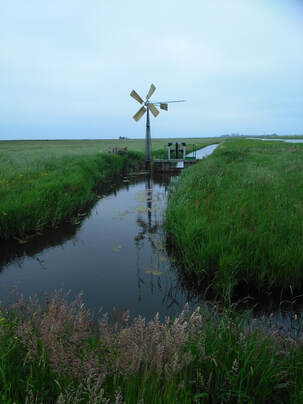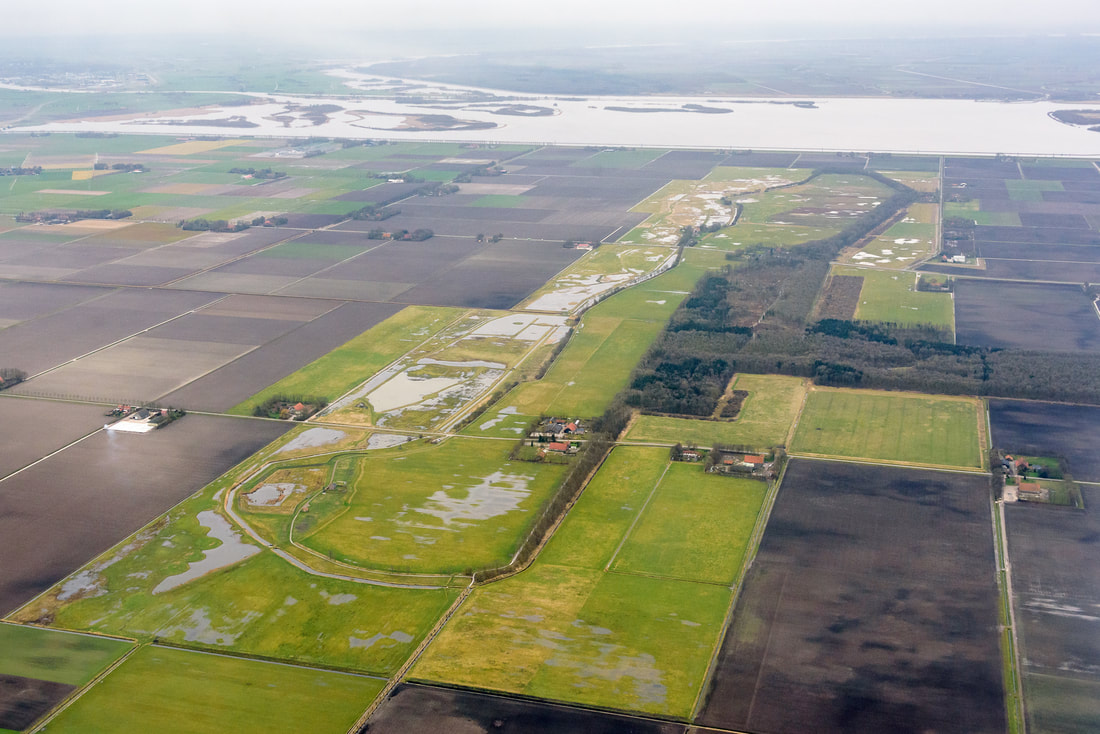THE issues in the netherlands: 3 case-studies
The Netherlands are internationally renowned for its large diversity in wetland environments, the way these have been interacted with in the past, and how they are managed nowadays. As such, they contain an enormous wealth in both tangible and intangible heritage and are an important part of the national Dutch identity. We have selected three very different case-studies that reflect this diversity and the variety of challenges with regard to the heritage contained within these landscapes.
schokland
|
Schokland is a former island in the Dutch ‘Southern Sea’, inhabited since the Middle Ages and reclaimed in 1942. Former submerged river dunes nearby contain several well-preserved early prehistoric archaeological sites. Current challenges mainly relate to water management; groundwater tables are rising due to subsidence and seepage, which – combined with governmental restrictions – poses a great problem for agriculture and water management. Furthermore, increasing usage restrictions (rewetting, archaeological legislation) lead to decrease of economic land value. The main question is how to deal with the interests of the large variety of stakeholders involved (e.g. province, municipality, water boards, agrarians, nature conservationists, heritage managers).
|
wadden sea
|
The Wadden Sea is the largest contiguous system of intertidal sand and mudflats in the world, stretching from the Netherlands to Germany and Denmark. It is characterised by a large floral and faunal richness and is one of the last large-scale intertidal ecosystems. Recent research has demonstrated that accelerated sea level rise (caused by climate change and subsidence) may have very significant consequences. Examples are drowning and decrease of ecologically valuable floodplains, marshes and mudflats, and increased coastal erosion. So far, no attention is given to the possibly devastating effects on the areas important and rare heritage remains (e.g. reclamations, early dykes, shipwrecks, maritime cultural heritage).
|
the dutch fenlands

The fenlands in the western and central part of the Netherlands (in Dutch called veenweidegebied) belong to the most characteristic Dutch landscapes. They have a complex habitation history, starting in the 10-13th century, and are described as centers of historic innovation in land reclamation and drainage. Furthermore, they form the basis for various historical military defenses. The fenlands (mainly used as pasture) are threatened by a combination of subsidence (caused by agriculture) and sea level rise. This leads to large-scale peat oxidation and increased risk of flooding. Increasing water levels could counter this, but would turns these typical cultural landscapes into swamps and cause problems for farmers. The study aims to identify and assess the conflicting interests, and develop sustainable future pathways.
partners
To reach the project goals we work together with a variety of partners, including the Waddenacademie (on the Wadden Sea), Municipality Noordoostpolder (on Schokland), and the Cultural Heritage Agency (all three case studies).






